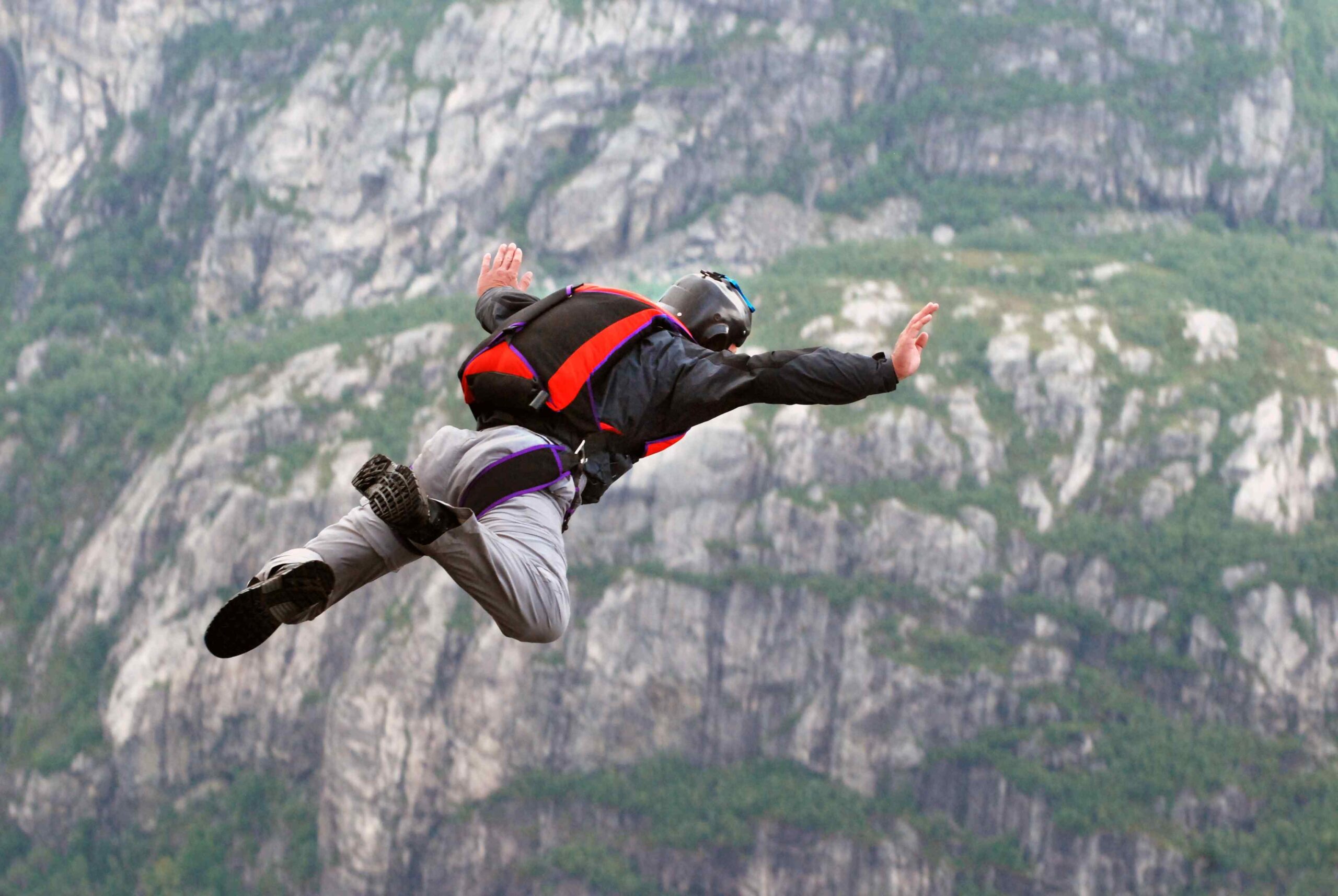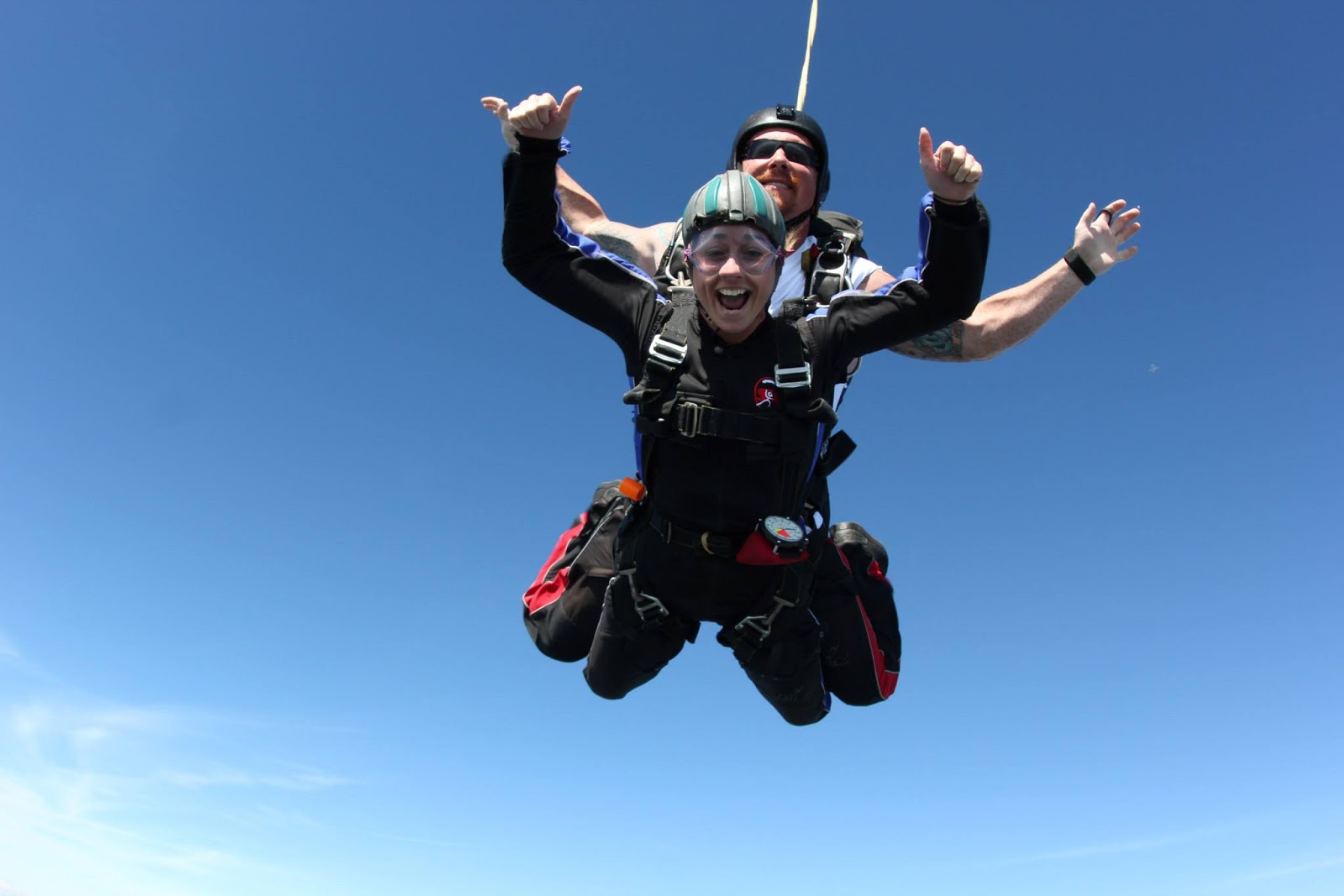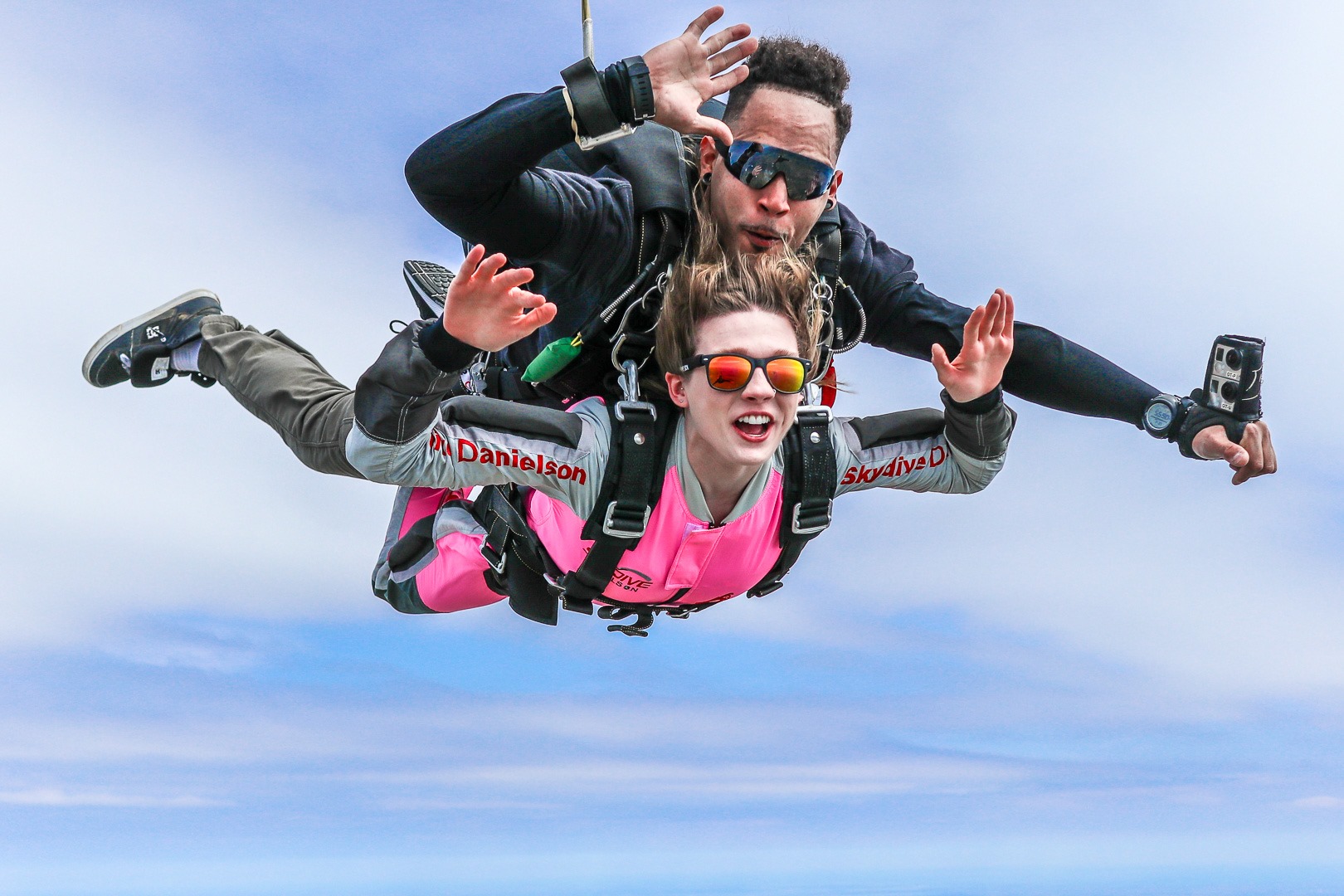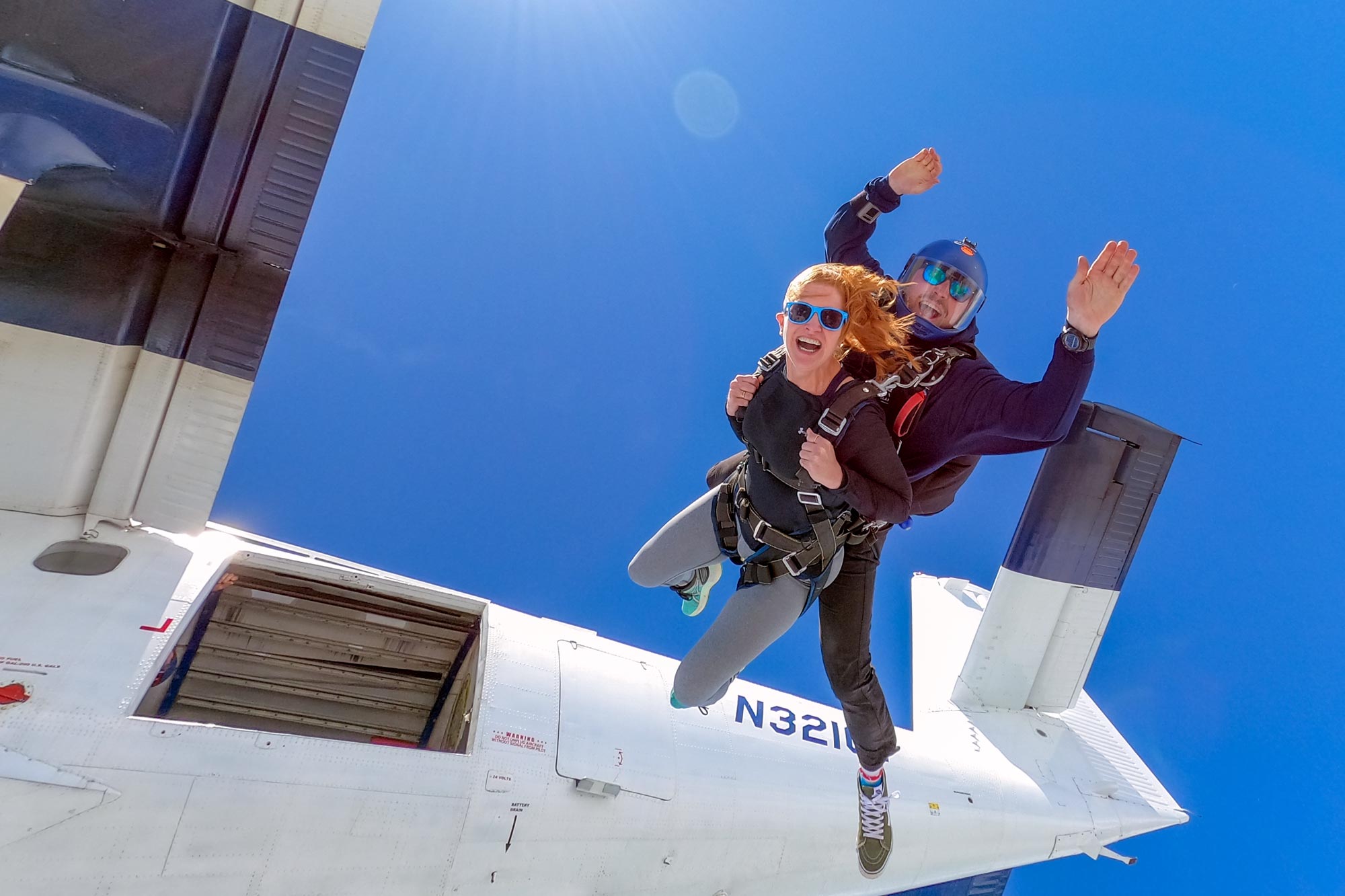What Is BASE Jumping? Meaning & Origins
BASE jumping is one of the most extreme forms of parachuting — and it’s not for the faint-hearted. The term “BASE” is actually an acronym that defines the four types of fixed objects from which jumpers leap: Buildings, Antennas, Spans, and Earth (cliffs).
- What Is BASE Jumping? Meaning & Origins
- What Does the “BASE” in BASE Jumping Stand For?
- BASE vs Skydiving: What’s the Difference?
- How Many Skydives Before BASE Jumping?
- Table of Contents
- Risks, Dangers & Death Rates in BASE Jumping
- BASE Jumping Ground Rules & Safety Measures
- BASE Jumping Acronym in Pop Culture & Slang
- BASE Jumping in India & Locations Near Me
- BASE Jumping FAQs
- Final Thoughts
Unlike skydiving, which involves jumping from an aircraft, BASE jumping takes place from stationary structures closer to the ground. This means there’s less time for parachute deployment and reaction, making it significantly more dangerous.
In simple terms:
BASE jumping is the art of leaping from a fixed object using a parachute to break your fall.
This thrilling yet risky sport started gaining attention in the 1980s, inspired by skydivers who wanted to push the limits of freefall closer to the Earth.
What Does the “BASE” in BASE Jumping Stand For?
The BASE acronym stands for:
| Letter | Meaning | Example |
|---|---|---|
| B | Building | Skyscrapers, towers, and other tall structures |
| A | Antenna | Radio or TV masts, often in remote areas |
| S | Span | Bridges or similar structures spanning a gap |
| E | Earth | Natural cliffs, mountains, or canyons |
This acronym not only gives the sport its name but also reflects the four primary categories of jump sites used by BASE jumpers worldwide.
BASE vs Skydiving: What’s the Difference?
While both sports involve parachutes, there are key differences:
| Aspect | BASE Jumping | Skydiving |
|---|---|---|
| Jump Point | Fixed structures (Buildings, Antennas, Spans, Earth) | Aircraft |
| Altitude | Much lower (often <1,000 ft) | Typically 10,000–14,000 ft |
| Parachute | Single canopy | Dual (main + reserve) |
| Freefall Time | Shorter (1–5 seconds) | Longer (up to 60 seconds) |
| Risk Level | Extremely high | Relatively controlled |
So, do base jumps count as skydives?
Technically, no. Skydives are from aircraft, while BASE jumps are from stationary structures. However, many BASE jumpers start as skydivers to gain experience with parachute handling and freefall control.
How Many Skydives Before BASE Jumping?
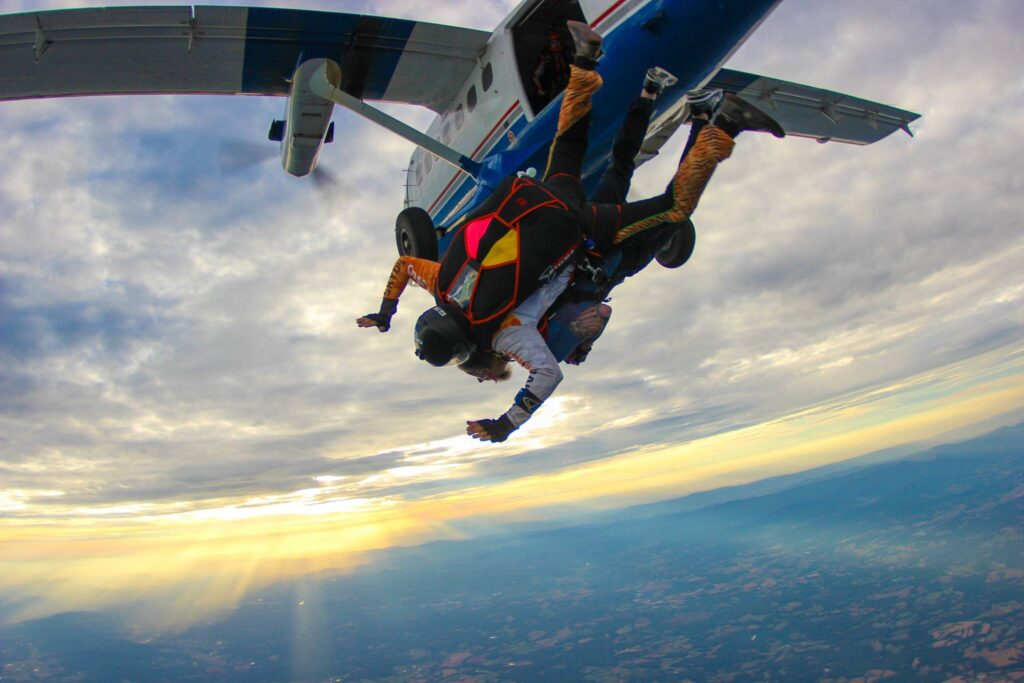
Table of Contents
To safely start BASE jumping, experts recommend having at least 200 skydives before attempting your first BASE jump.
This ensures:
- You’re comfortable handling parachutes in varied conditions.
- You understand wind patterns and landing accuracy.
- You’ve mastered emergency procedures.
Many training centers even require proof of experience before allowing a BASE jump course.
If you’re new, start by learning skydiving first — it’s the foundation for every successful BASE jumper.
Risks, Dangers & Death Rates in BASE Jumping
BASE jumping is considered the most dangerous sport in the world. The short freefall distance, lack of backup parachutes, and unpredictable wind conditions make every jump risky.
According to available data, the BASE jumping fatality rate is roughly 1 in every 500–2,500 jumps, far higher than skydiving.
For comparison, skydiving deaths occur in about 1 in every 150,000 jumps.
Learn more about safety comparisons in our related guide:
👉 Skydiving Deaths Per Year
Common causes of BASE jumping accidents include:
- Parachute malfunction or delayed opening
- Jumping in poor weather or windy conditions
- Insufficient training
- Equipment failure
- Impact with objects during descent
BASE Jumping Ground Rules & Safety Measures
If you’re ready to explore the thrill of BASE jumping, safety must come first. Follow these golden rules:
- Train with certified instructors experienced in BASE jumps.
- Always inspect your gear — canopy, pilot chute, harness, and container.
- Check the weather before any jump. Wind speed and direction are crucial.
- Scout your landing zone ahead of time.
- Avoid illegal sites — BASE jumping is restricted or banned in many locations.
- Use a helmet and body protection to reduce injury risk.
Pro Tip: Start with bridge or span jumps, as they often offer better altitude and visibility for beginners.
BASE Jumping Acronym in Pop Culture & Slang
The BASE acronym has even evolved into slang within extreme sports communities. On platforms like Reddit, phrases like “BASE mentality” or “BASE-level thrill” describe people who live for high-risk adrenaline experiences.
You’ll also find BASE jumpers referring to themselves as “BASE number holders” — individuals who have successfully jumped from all four categories (B, A, S, and E). This is a badge of honor within the community.
BASE Jumping in India & Locations Near Me
While BASE jumping in India is still emerging, a few scenic cliffs and remote locations have caught attention among professional jumpers. However, due to strict laws, BASE jumping is largely prohibited without prior permission from authorities.
For those looking to experience the thrill safely, try skydiving in India first — popular spots like Mysuru, Aligarh, and Pondicherry offer professional setups and certified instructors.
Searching “BASE jumping near me” might show limited results, but always verify legality and safety before attempting any jump.
BASE Jumping FAQs
1. What does BASE stand for in BASE jumping?
BASE stands for Buildings, Antennas, Spans, and Earth, which are the four fixed structures used for jumps.
2. How safe is BASE jumping compared to skydiving?
BASE jumping is far more dangerous due to lower altitudes and less time to deploy a parachute. Skydiving is significantly safer and better for beginners.
3. How many skydives should I have before BASE jumping?
At least 200 skydives are recommended to develop proper control, confidence, and understanding of parachute systems.
4. Do base jumps count as skydives?
No, because skydiving involves jumping from an aircraft, while BASE jumping involves fixed objects like cliffs or buildings.
5. Is BASE jumping legal everywhere?
No. Many countries and cities restrict or ban BASE jumping due to safety concerns. Always check local laws before attempting.
6. What is the BASE jumping death rate?
It varies, but estimates suggest 1 fatality per 500–2,500 jumps, which is much higher than skydiving’s rate.
Final Thoughts
The BASE jumping acronym isn’t just a catchy name — it defines the essence of one of the world’s most daring sports. From leaping off towering buildings to diving from sheer cliffs, BASE jumpers chase an unmatched rush of adrenaline and freedom.
But with great thrill comes great responsibility — training, safety, and preparation are everything.
If you’re drawn to the skies, start with skydiving first. Learn, build experience, and respect the heights — because in BASE jumping, every second truly counts.
